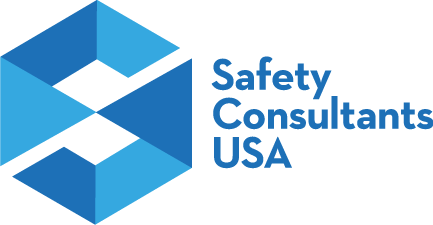The need for a gap assessment of a safety program can be universal. Nearly every company needs to understand how well their safety program is performing, but that need may be felt more acutely in certain industries or certain situations. Prior the sale of a company or acquisition of a target company it can be particularly important to understand how a company’s safety program is performing, as this could affect the purchase price either positively or negatively. Stakeholders that may be interested in a safety gap analysis could be the board of directors, owners, executive leadership, M&A professionals, private equity investors, target companies, acquiring companies, investment bankers and other parties that have a vested interest in the business maximizing shareholder value, eliminating injuries and the resulting claims, and understanding where there are opportunities for improvement in the organization’s safety culture.
In completing a gap assessment for a company we are going to look at a wide variety of leading and lagging indicators, as well as identify where opportunities exist for changes in the organization’s safety structure and culture. If you’re not sure where to start, or what may be holding your company back from achieving its safety goals, then a gap assessment may be a good choice for you. Some of the items we will analyze during an assessment may include:
- Site Safety Inspections – Ensuring that site safety inspections are revealing useful and actionable data. These may require audits of the company’s facilities, which will inevitably look different between locations, or field audits for installations or construction activities. These inspections give insight into what information and attitudes the employees take with them from training into the day-to-day operations of the business
- Employee Safety Behaviors – Employees with the best intentions can still make errors, or have bad habits engrained into their daily activities. Getting to the root of these behaviors can reveal where quick and effective changes can be made.
- Safety Culture Assessment – Understanding your safety culture and your employees and managers belief systems and attitudes towards safety can reveal vast opportunities for improvement. Culture eats strategy for lunch.
- Safety Training – Are you providing training on the right topics? Frequency of training, number of courses offered, variety of training styles accommodated can also be factors in whether your safety training program is adequate or exceptional.
- Safety Training Documentation – Is training documented? Even toolbox meetings and safety meetings? If not, you may be missing out on opportunities to verify that employees have received the required information at the frequency required by OSHA.
- Safety Manual/Written Health & Safety Programs – OSHA requires construction companies to have a Health & Safety Manual and companies classified as general industry to have written health and safety programs for certain high-hazard activities. In each circumstance these programs should be evaluated to ensure that the required programs are included. Additionally, because these programs drive training, inspections and other procedures, it is vital that these programs are current and reviewed regularly.
- Near-Miss Procedures – Since employees are human they are bound to make mistakes. Even the best-intentioned employee may have a lapse in judgment, forget a protocol, or just have a bad day from time-to-time. By documenting near-misses we can gain insights into potential incidents and develop corrective actions before someone is injured.
- Incident/Accident Procedures – When incidents and accidents do occur is the company documenting these, making corrective actions and conducting a root cause analysis? Are employees involved in this process? When an accident does occur it’s critical to review the lessons learned and include employees within all levels of the organization to ensure it doesn’t happen again. Ensuring this is documented to deliver a consistent outcome will lead to better results over time.
- Employee interviews regarding safety– What do employees say about the company’s training program? Do they agree that with the culture that management says it delivers? Do employees know where to locate written programs? Employees are asked to do a wide variety of tasks each day and they are supposed to operate safely without missing a step. To do this they need consistent messaging, training and support. If they feel that is missing they won’t be able to deliver the results you expect.
- EMR – The Employer Modification Rating is assigned by NCCI (National Council on Compensation Insurance) and rates workers compensation claims for your company against that of other companies that perform the same type of work. If your EMR is over 1.0 you are performing worse than your peers. If your EMR is below 1.0 you are performing better than your peers.
- OSHA 300 Logs – Does your company have more recordables than other companies with the same SIC Code or NAICS Code? What does your DART Rate and LTIR Rate say about your company? Is this measurement being used to determine your suitability as a partner on projects your company is bidding?
- Loss Run History – A company’s loss runs can reveal recurring injuries that need to be addressed, claims management issues, claims that should be closed out or should have the loss reserves reduced. Here you can also determine how long it may take for you to recover from claims that are hurting your EMR.
- Safety Committee – Does the company have a safety committee? How often do they meet? What do they discuss? Who is involved? These questions all help to determine if your safety committee is headed in the right direction or needs a revamp.
- OSHA Citation History – This public information is easily accessed by anyone with a smart phone. Understanding the reason for the inspection and if the possibility of a follow-up may happen is very important. This can also speak to the safety culture of your organization if the inspection was the result of a referral.
